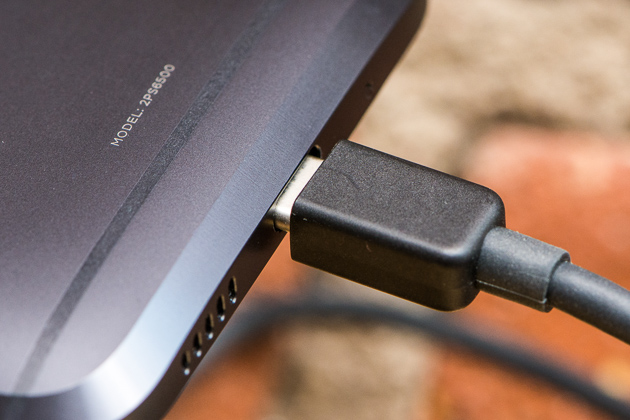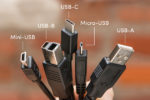Quick Charge and USB-C: Navigating the Next Generation of USB Charging

by Mark Smirniotis, thewirecutter.com
The promise of faster charging may be enticing, but we don’t think most people should toss out—ahem, we mean recycle—their current devices and accessories quite yet.
It’s been over 15 years since the modest USB port first became a fixture on computers around the world, initially as a way to connect basic peripherals and then as a standard for faster data transfer. But the connectors and speeds people have gotten used to—USB-A, Mini-USB, Micro-USB, USB 2.0—have gotten a bit long in the tooth, as the original port and cable designs weren’t built to handle the power-hungry, fast-data devices everyone has come to rely on. Fortunately, a new generation of connectors (USB-C) and a fresh mélange of fast-charging standards (including USB Power Delivery and Quick Charge) have arrived to charge those devices’ larger batteries much faster than before.
The promise of faster charging may be enticing, but we don’t think most people should toss out—ahem, we mean recycle—their current devices and accessories quite yet. The availability of new, faster-charging devices is limited right now, and because the implementation and compatibility among manufacturers is still a mess, you won’t always get the promised benefits. But if you already have a phone or tablet that can take advantage of USB-C, USB Power Delivery, or Quick Charge, you should make sure to buy the right accessories to get the most out of that gear.
First we need to talk about the connectors and ports you can find on devices. The rectangular port that’s been on all but a few computers this century is technically called a USB-A port—it’s supposed to appear only on source devices such as computers and chargers. Plug in a USB cable, and the other end of the cable connects to a target device using one of a handful of connectors, generally either USB-B (common on big, stationary devices such as printers), Mini-USB (a smaller size common on older cameras and hard drives), or Micro-USB (even smaller, and found on everything from phones to tablets to battery packs).
Depending on the devices at each end of the cable, each connector is capable of some combination of one of multiple standard power levels and one of multiple data standards. Fun, right? If two devices don’t quite mesh—for example, if you connect a fast-charging-capable phone to a slow charging port, or copy data from a speedy hard drive to a slow computer—the slower side always prevails. The important idea here, however, is that a specific connector doesn’t determine the connection’s power or data capabilities.
Though USB power has gone from less than 1 amp of current (1 A) in its earliest incarnations to more than 2 A today, devices have maxed out the data and power capabilities of these connectors. We’ve talked before about how you can think of voltage in an electrical system as being similar to water pressure, and how you can think of the current or amperage as the size of the pipe. Traditional USB has always offered 5 volts, which is just a trickle—that’s a lower amount of voltage than what you get from a car battery (12 V) and much lower than residential voltage (110 V AC in the US). Because volts × amps = watts, if your iPhone is charging at 2 A over USB, it’s using just 5 V × 2 A = 10 W of power, in contrast to something like a 32-inch LCD TV, which might use close to 100 W. The higher the numbers, the faster your device will charge.
Quick Charge
Enter Quick Charge (QC) from Qualcomm. Devices with QC technology inside are capable of safely pushing and pulling higher voltages than the USB standard technically allows, while still using the same USB cables you’ve probably owned for years. That’s possible because when you plug a QC-capable device into a QC-capable source, the two communicate differently to manage the extra power. Since the first version of QC debuted in 2013, QC has evolved to support ever-higher voltages that can charge compatible devices ever faster—20 V in QC 3.0, the latest iteration, or four times the voltage of standard USB. As an example of what this means in real-world use, the HTC 10 and LG G5 smartphones, which both feature QC 3.0 support, promise to charge the first 80 percent of the battery in about 35 minutes.





